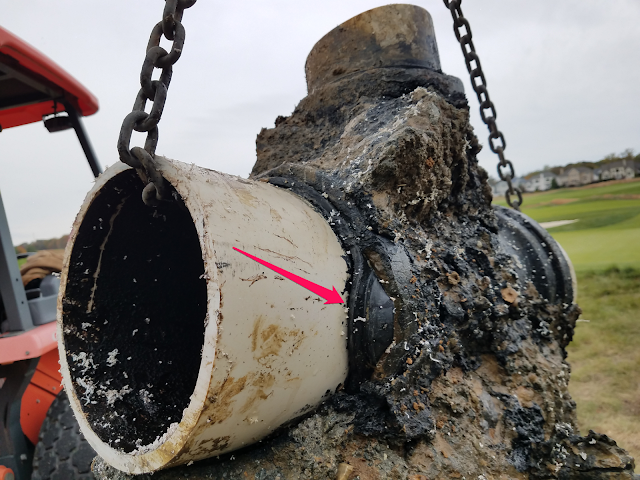Have you ever run a marathon? If you're like the vast majority of people, the answer is a definite, "
No!". However, for both the maintenance staff and the turf, the past two weeks have felt like back to back marathons.
The first push started as we prepared for one of the Club's premier events, the fall Member-Member. We always coordinate our late summer aerification with the timing of this event in an effort to have the course in great condition. With the wet weather of August delaying the completion of aerifiying, we knew having things completely healed would be close. Based on comments from members who participated in the event, we got a nice thumbs up.
We had no time to pat ourselves on the back after the Member-Member, as Laurel Creek hosted the Philadelphia PGA Professional Championship last week, beginning with a Pro-Am on Monday, and concluding on Thursday. Over 140 of the area's pros were competing for the title, and from beginning to end, this was a positive experience for all involved.
For starters, the communication with the PGA Section Staff was outstanding. We had met to discuss course setup well ahead of time, and their were no last minute requests or surprises. To the contrary, the PGA officials asked repeatedly if everything was good on our end, or if we needed anything.
It was also unusual, and refreshing that not one single time during this four day event were we asked the green speed. To repeat,
the number of times we were asked the speed was: Zero. That truly is something to take a step back and consider. Pin placements were chosen by putting to a potential location, not by a number.
That being said, we did hear adjectives describing the putting surfaces, such as "fast," "slick" and "
really fast."
Another thing the staff appreciated was how the players went out of their way to thank them for the hard work they do. We even had a player swing into the maintenance facility between #17 green and #18 tee to thank us.
While we saw some low scores posted the first two days, with the tees pulled back on the final day of competition, there were few red numbers to be found:
 |
| Terry Hertzog's -2 was one better than Dave Quinn. |
Despite two straight weeks of abuse, both the turf and staff held up extremely well! The guys will be very happy to back off double-mowing for a few days. However, it's now on to the next challenge, as we have July-like temperatures to deal with for a bit...



















































